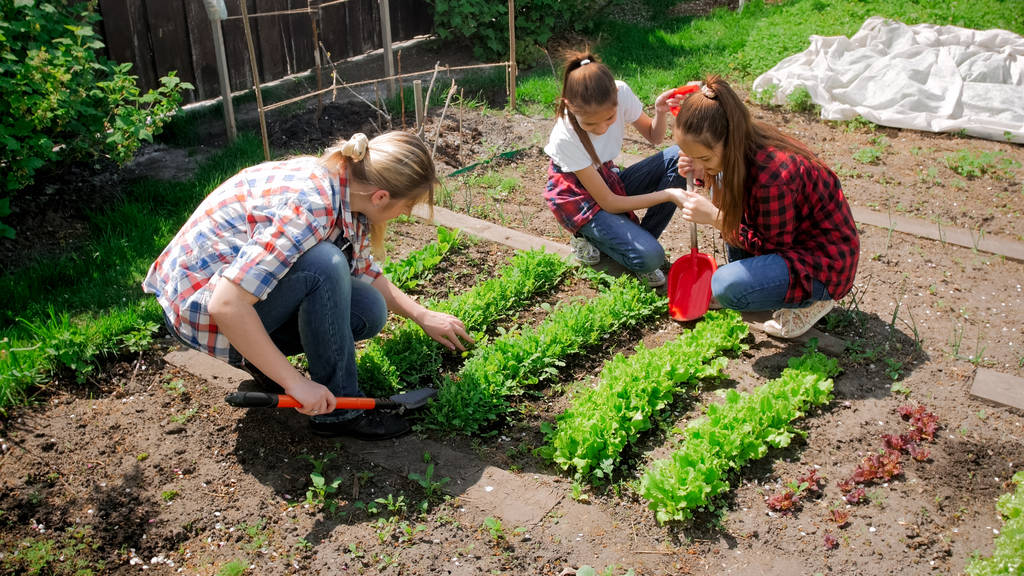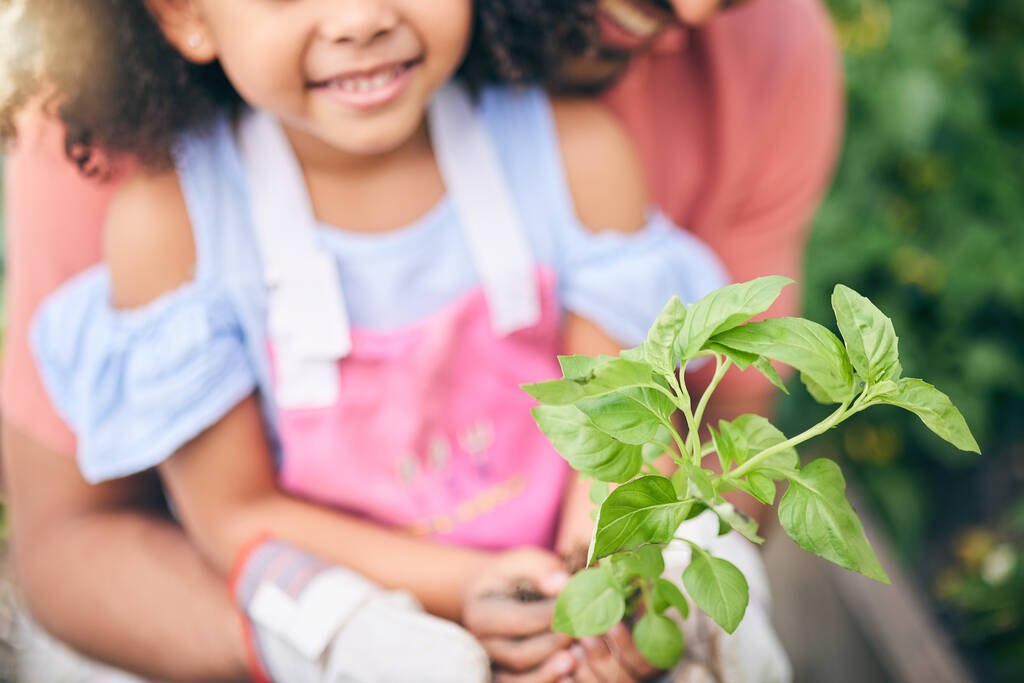Discover effective strategies and tips for teaching gardening to 8-9 year old children.
How to Teach Gardening to 8-9 Year Old Children
Teaching gardening to 8-9 year old children can be a fun and rewarding experience. Not only does it allow them to get their hands dirty and connect with nature, but it also helps develop important life skills and promotes a love for the environment. In this article, we will explore the importance of gardening for children, how to prepare for your first gardening lesson, how to create an engaging curriculum, and how to teach basic gardening skills. So grab your gardening gloves and let’s dig in!

Understanding the Importance of Gardening for Children
Gardening is not just about growing plants; it is about nurturing young minds. Research has shown that gardening provides numerous benefits to children, both physically and mentally. It promotes physical activity, improves motor skills, boosts self-esteem, and instills a sense of responsibility. Gardening also allows children to connect with nature, fostering their curiosity and appreciation for the world around them.
When children engage in gardening, they are not only planting seeds and watching them grow; they are embarking on a journey of discovery and learning. As they dig their hands into the soil, they develop a tactile connection with the earth, feeling its texture and richness. This sensory experience stimulates their senses and enhances their understanding of the natural world.
Furthermore, gardening offers a multitude of benefits for children’s cognitive and emotional development. It enhances problem-solving skills, encourages creativity, and fosters a sense of accomplishment. From watching seeds sprout to witnessing the growth of plants, children experience the wonders of the natural world firsthand. They learn about the life cycle of plants, the importance of sunlight and water, and the role of pollinators in the ecosystem.
Benefits of Gardening for Young Minds
Gardening not only provides physical and cognitive benefits but also has a profound impact on children’s emotional well-being. The act of nurturing plants and watching them thrive instills a sense of responsibility and pride in children. They feel a deep connection with the plants they care for, developing empathy and compassion for living things.
Moreover, gardening serves as a therapeutic outlet for children, allowing them to unwind and reduce stress. The act of tending to plants and being surrounded by nature has a calming effect on their minds, promoting relaxation and mindfulness. It provides a sanctuary where they can escape from the pressures of everyday life and find solace in the beauty of nature.
Building a Connection with Nature
One of the most valuable aspects of gardening is the opportunity it provides for children to build a deep connection with nature. From observing the different types of plants and insects to understanding the delicate balance of ecosystems, children gain a greater appreciation for the environment and learn the importance of taking care of it.
Through gardening, children become stewards of the earth, learning about sustainable practices and the impact of their actions on the planet. They develop a sense of environmental responsibility and become advocates for conservation and biodiversity. This connection with nature extends beyond the garden, influencing their choices and behaviors in their everyday lives.
In conclusion, gardening is a powerful tool for children’s growth and development. It offers a wide range of physical, cognitive, and emotional benefits, while also fostering a deep connection with nature. By engaging in gardening activities, children not only learn about plants and ecosystems but also develop life skills and values that will stay with them for a lifetime.
Preparing for Your First Gardening Lesson
Before diving into the world of gardening, it’s essential to gather the necessary tools and create a safe and kid-friendly gardening space.
Gathering Essential Gardening Tools
Start by collecting child-sized gardening tools such as trowels, watering cans, and gloves. Having tools that are easy for children to handle will make the experience more enjoyable and less frustrating.
When choosing gardening tools for kids, opt for ones with bright colors and fun designs. This will not only make the tools more appealing to children but also help them differentiate between different tools and understand their purposes. For example, a trowel with a ladybug pattern or a watering can with a dinosaur-shaped spout can spark their imagination and make gardening feel like a playful adventure.
Additionally, consider investing in child-sized gardening gloves that provide protection while allowing for dexterity. Look for gloves made with breathable materials and a snug fit to ensure comfort and flexibility. Encourage children to put on their gloves before starting any gardening activity to instill good habits and keep their hands safe from thorns, dirt, and potential irritants.
Setting Up a Safe and Kid-Friendly Gardening Space
Next, create a designated gardening area that is safe and accessible for kids. Consider using raised beds or containers to prevent accidents and make it easier for children to reach the plants. Ensure the area has good drainage and is protected from any potential hazards.
When choosing a location for your kid-friendly gardening space, take into account the amount of sunlight the area receives. Most plants require at least six hours of direct sunlight per day, so aim for a spot that gets ample sunlight throughout the day. If your chosen area is shaded, consider planting shade-tolerant plants such as lettuce, spinach, or herbs like mint and parsley.
Furthermore, think about the soil quality in your gardening space. Conduct a soil test to determine its pH level and nutrient content. This will help you understand if any amendments, such as compost or organic fertilizers, are needed to create a fertile environment for your plants to thrive. Involving children in the soil testing process can be a fun and educational activity, teaching them about the importance of soil health and how it affects plant growth.
Additionally, ensure that your gardening space is free from any potential hazards. Remove any sharp objects, rocks, or debris that may cause injuries. If you have pets, consider creating a physical barrier or using natural deterrents to keep them away from the gardening area. This will help protect both your plants and your furry friends.
Lastly, make sure your kid-friendly gardening space has proper drainage. Poor drainage can lead to waterlogged soil, which can be detrimental to plant health. If your chosen area has heavy clay soil or tends to retain water, consider incorporating organic matter, such as compost or well-rotted manure, to improve drainage. This will ensure that excess water can easily flow away from the plant roots, preventing root rot and other water-related issues.
Creating an Engaging Gardening Curriculum
Now that you have everything set up, it’s time to design a curriculum that will keep the children engaged and excited about gardening.
Gardening is not only a valuable skill but also a great way to connect with nature and foster a sense of responsibility. By designing a curriculum that incorporates fun and educational activities, you can make learning about gardening enjoyable for children.
Incorporating Fun and Educational Activities
Make learning about gardening enjoyable by including games, crafts, and hands-on activities. For example, you can create a scavenger hunt to find different types of leaves or flowers, or have the children decorate their own plant markers. These activities not only make the lessons more interactive but also reinforce the knowledge gained.
Another engaging activity is to have the children create their own mini-garden in a container. This allows them to experience the joy of planting and caring for their own plants, even if they don’t have access to a large outdoor space. They can choose their favorite flowers or herbs and learn about the specific care requirements for each plant.
In addition, you can organize a field trip to a local botanical garden or a community garden. This will give the children an opportunity to see different types of plants and learn from experienced gardeners. They can observe the different stages of plant growth and ask questions to deepen their understanding.
Tailoring Lessons to the 8-9 Year Age Group
When teaching gardening to 8-9 year olds, it’s important to consider their developmental stage and interests. Encourage their curiosity by explaining the scientific concepts behind gardening in simple terms. Teach them about photosynthesis, soil composition, and the importance of water and sunlight for plant growth.
Allowing the children to take on more responsibilities can also enhance their learning experience. For example, you can assign each child a specific plant to care for throughout the curriculum. They can be responsible for watering, fertilizing, and monitoring the growth of their assigned plant. This hands-on approach will not only teach them about plant care but also foster a sense of ownership and pride.
Furthermore, you can engage the children in planning a small garden layout. Let them use their creativity to design a garden bed, considering factors such as plant height, spacing, and companion planting. This activity will develop their critical thinking skills and provide them with a sense of accomplishment when they see their plan come to life.
Throughout the curriculum, provide opportunities for the children to document their gardening journey. They can keep a journal where they record observations, sketches, and reflections. This will not only help them develop their writing skills but also encourage them to reflect on their experiences and learn from their successes and challenges.
Teaching Basic Gardening Skills
Now that you have piqued the children’s interest and established a solid foundation, it’s time to teach them some basic gardening skills.
Introducing Soil and Plant Types
Start by teaching them about different soil types and the importance of soil health. Explain how different plants require different soil conditions and help them understand the fundamentals of plant nutrition. You can also introduce them to various plant types such as flowers, vegetables, and herbs, and discuss their specific requirements for growth.
Guiding Kids in Planting and Watering Techniques
Show the children how to properly plant seeds or transplant seedlings into the soil. Demonstrate techniques such as creating small holes, gently covering the seeds, and watering correctly. Emphasize the importance of providing adequate sunlight and water for plant growth, and teach them how to monitor and adjust these factors as needed.
Encouraging a Love for Gardening
One of the most rewarding aspects of teaching gardening to children is watching their love for the activity blossom.

Celebrating Each Child’s Gardening Achievements
Recognize and celebrate the children’s accomplishments throughout the gardening journey. Whether it’s their first successful harvest or the sight of a flower they nurtured from a tiny seed, make them feel proud of their achievements. Encourage them to share their experiences with others and inspire their friends and family to embrace gardening as well.
Fostering a Long-Term Interest in Gardening
To nurture a long-term interest in gardening, continue to provide opportunities for children to explore and learn. Encourage them to keep a gardening journal, where they can document their observations, drawings, and thoughts. Plan field trips to botanical gardens or nurseries for them to discover new plants and gain inspiration.
Teaching gardening to 8-9 year old children is not just about teaching them how to plant seeds; it’s about nurturing their love for nature and instilling valuable life skills. With the right tools, a well-designed curriculum, and a playful approach, you can inspire the next generation of green thumbs and environmental stewards. So grab your young gardeners and let the gardening adventure begin!



